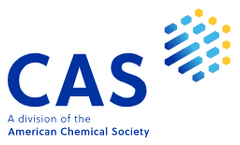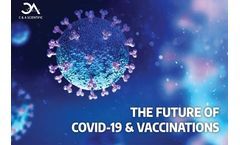Vaccine Dose Articles & Analysis
16 articles found
The breakthrough: halving death rates with vaccines When it comes to infectious diseases, few advancements have been as significant and hopeful as the development and deployment of an effective vaccine, and the case for Ebola is no different. ...
The current guidelines from the WHO and FDA stipulate that residual DNA in finished products should not exceed 10 ng/dose, with a length no greater than 200 bp. FDA guidelines specify that the residual DNA limit for host cells in biologics is 100 pg/dose. However, high-dose biologics, such as monoclonal antibodies, should have residual DNA not ...
” The randomized, double-blind, dose-escalating, age de-escalating, placebo-controlled, Phase 1b study, (clinicaltrials.gov NCT04960397) is designed to evaluate a monovalent Singapore 2016 H3N2 M2SR influenza A vaccine in children. ...
CSL Seqirus delivered a record 135 million doses of flu vaccines globally last year, here’s how we make such a feat happen. ...
Influenza is constantly mutating. 70 years ago, the World Health Organization set up a surveillance network to protect people from its threat. Making influenza vaccines that can help protect against viruses that threaten human health isn’t a simple process. It requires the cooperation between influenza vaccine manufacturers like Seqirus, and the ...
Study will measure immune responses generated by M2SR and high dose vaccine separately and in combination in the highly vulnerable 65-85 years old population – Funded by the US Department of Defense, this study is expected to yield topline data in 2H 2022 – MADISON, Wis., June 22, 2022 /PRNewswire/ — FluGen, Inc., a clinical-stage ...
A breakthrough in nanotechnology accelerates vaccine production While COVID-19 hotspots have continued to emerge driven by the Delta variants, the data still shows that vaccinations are effective at preventing hospitalizations and deaths. While over 4 billion vaccine doses have been administered worldwide, only 27% of the ...
To bolster Ghana’s immunisation efforts against COVID-19 and ensure that the necessary cold chain for these mRNA vaccines would be ready for the arrival of the doses, the government started initiatives to provide its healthcare system with enough freezers and ultra-low freezers to store vaccines at temperatures from -86°C to +8°C. ...
To be able to run successful and effective COVID-19 immunisation campaigns, governments and organisations around the world need to ensure that a reliable vaccine cold chain for the safe storage and transport of their vaccines is set up to protect the doses from temperature variations that could result in them losing their potency. ...
The study is designed to measure a breadth of immune responses against both vaccine matched and drifted influenza strains amongst study subjects who receive either vaccine alone, both vaccines administered simultaneously, or both given sequentially. ...
At the beginning of this year, the US saw the highest number of Covid-19 cases and deaths it had ever seen. Personal protection equipment (PPE), like masks and gloves, was next to impossible to find and purchase resulting in the worst shortage since the start of the pandemic. On top of a PPE shortage, price gouging and supply chain disruption shook US businesses to their core. 2021 was off to a ...
Just before the end of 2020, companies like Moderna and Pfizer, with help from many C & A Scientific customers, were able to provide a solution by developing a series of vaccines to eligible patients, depending on which state you are in. As of February 1st, 31.8 million vaccines have been administered in the United States and 1.7% of people have received ...
It is not just the huge numbers (literally, in the billions of doses) and vast geographic scope (worldwide, requiring delivery to every country on the planet) that make the COVID-19 vaccine distribution task so daunting, but both the Pfizer and Moderna vaccines must be stored and transported in strict climate-controlled environments (reportedly, ...
Vaccines have antigens similar to viruses that cause chickenpox, mumps, and measles. For instance, the influenza vaccine may contain the genetic code of certain strains. The antigens from this vaccine are either weak or dead, so they do not cause diseases, unlike the virus. ...
ByAKCP
The vaccine never makes it into the animal The virus or bacteria is a different strain than the vaccine. ...
Eight candidate vaccines are already being tested in people in clinical trials. Once an effective vaccine (or vaccines) has been identified, it will need to be produced rapidly and on a massive scale—billions of doses. ...











